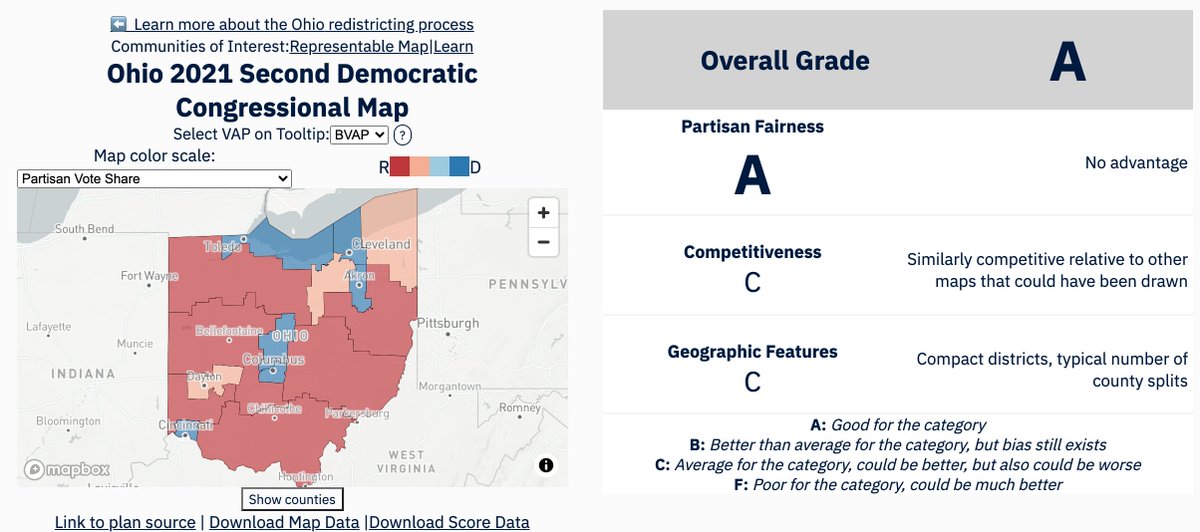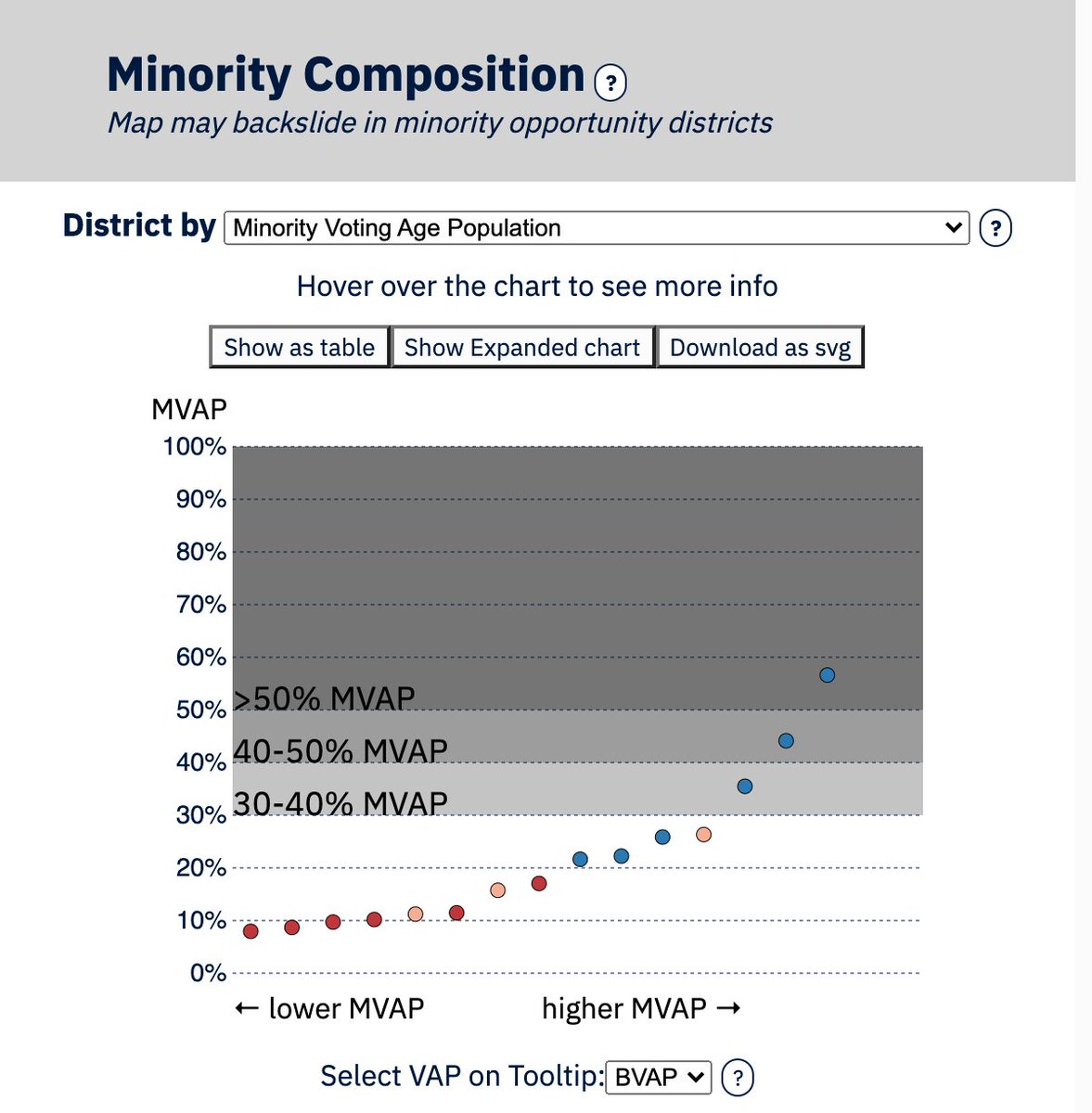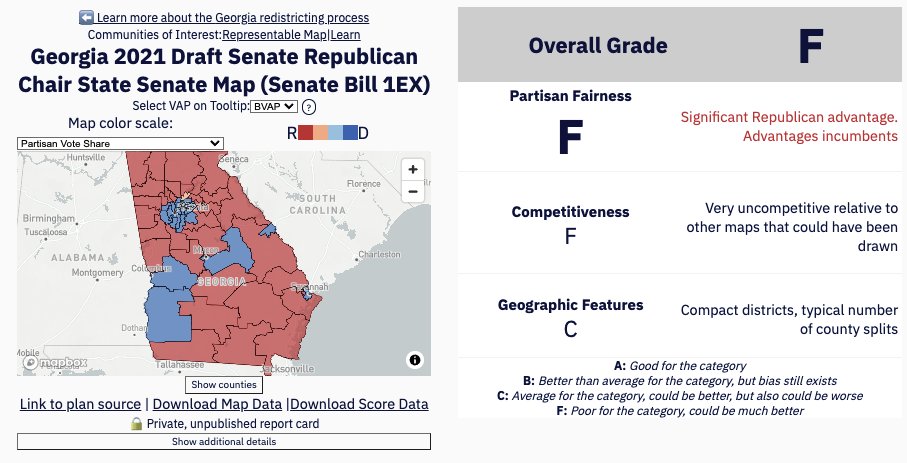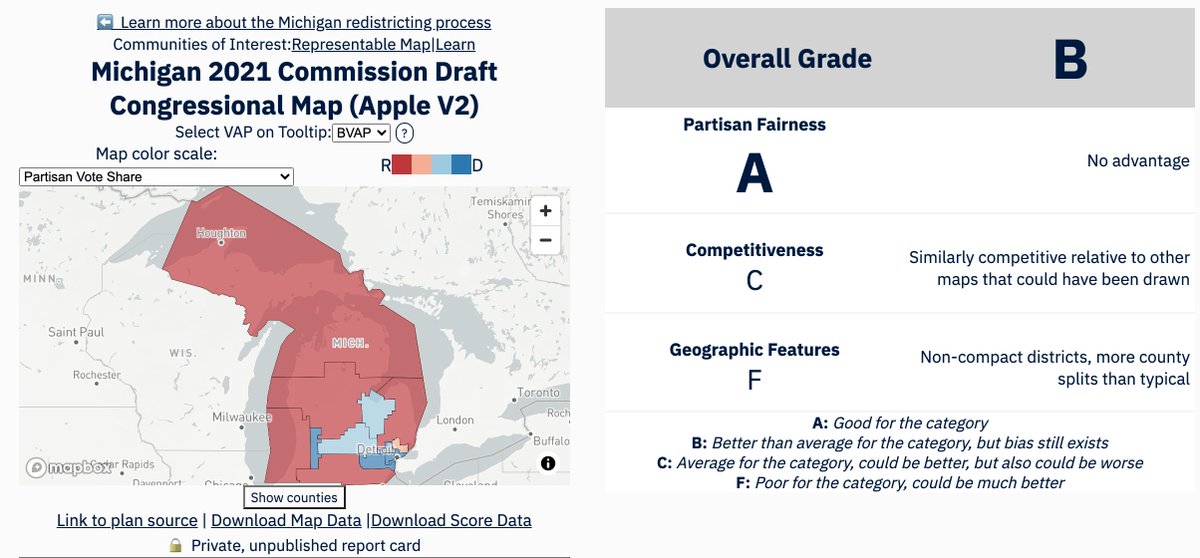We have report cards for the final map iterations from the Peoples Map Commission in Wisconsin. This Commission was assembled by the Governor to advise him on redistricting during this cycle.
#PGP_WI #WIPol #FairMaps #Redistricting
#PGP_WI #WIPol #FairMaps #Redistricting

First up is the Congressional Map. It gets a B overall and in Partisan Fairness, with an F in Competitiveness and a C in Geography.
We'd expect it to elect a 4-4 delegation. It only has one competitive district, which is below what we'd expect.
gerrymander.princeton.edu/redistricting-…
We'd expect it to elect a 4-4 delegation. It only has one competitive district, which is below what we'd expect.
gerrymander.princeton.edu/redistricting-…
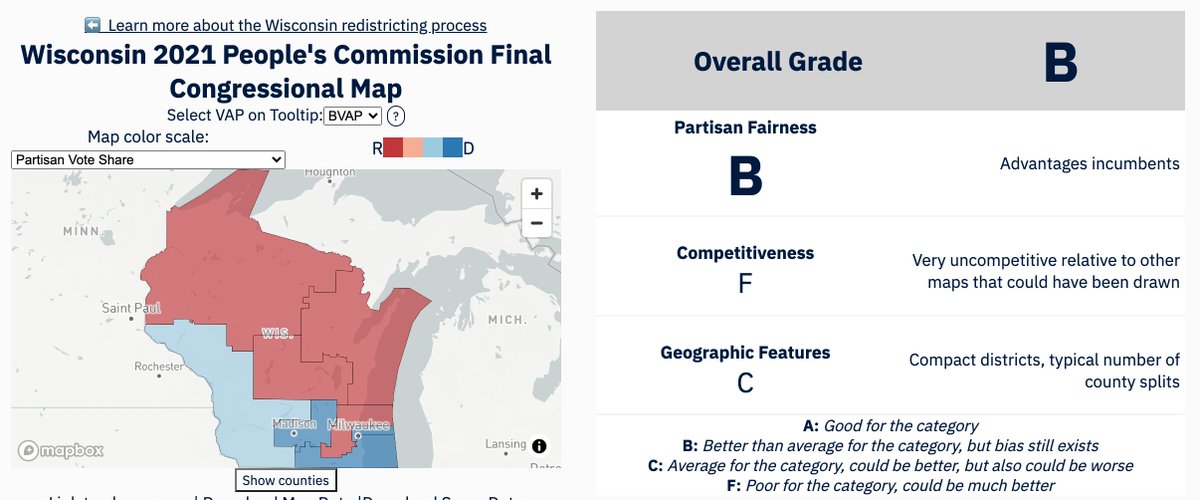
Next is the Assembly Map. It gets an A overall and in Partisan Fairness, with Cs in Competitiveness and Geography.
We'd expect a 50D-49R split, with 17 competitive seats, meaning each election, control could flip.
gerrymander.princeton.edu/redistricting-…
We'd expect a 50D-49R split, with 17 competitive seats, meaning each election, control could flip.
gerrymander.princeton.edu/redistricting-…

It has 7 districts with a BVAP over 40% and 2 with an HVAP over 50%.
The map's declination appears to slightly favor Republicans, but the difference is slight, thus the reason we gave the map an A.
The map's declination appears to slightly favor Republicans, but the difference is slight, thus the reason we gave the map an A.

Finally, the state Senate. It also gets As overall and in Partisan Fairness, with Cs in Competitiveness and Geography.
We'd expect it to elect a 17R-16D split, with 7 competitive seats.
gerrymander.princeton.edu/redistricting-…
We'd expect it to elect a 17R-16D split, with 7 competitive seats.
gerrymander.princeton.edu/redistricting-…

It has two districts with a BVAP over 40% and one with an HVAP just below 40%.
There is a rather marked jump in the Democratic vote share in the composition chart. This may be a product of geographic sorting or the need to comply with the VRA.
There is a rather marked jump in the Democratic vote share in the composition chart. This may be a product of geographic sorting or the need to comply with the VRA.

These maps, however, are significantly better than those proposed by the WI State Legislature. Report cards for their proposed maps are below.
Congress: gerrymander.princeton.edu/redistricting-…
Senate: gerrymander.princeton.edu/redistricting-…
House: gerrymander.princeton.edu/redistricting-…
Congress: gerrymander.princeton.edu/redistricting-…
Senate: gerrymander.princeton.edu/redistricting-…
House: gerrymander.princeton.edu/redistricting-…
• • •
Missing some Tweet in this thread? You can try to
force a refresh






